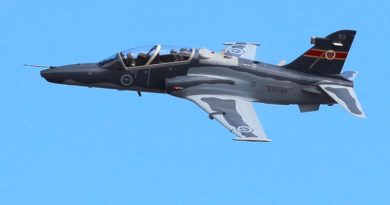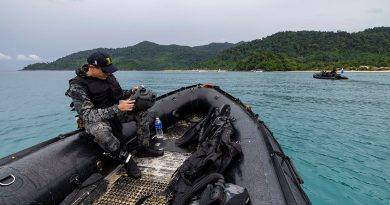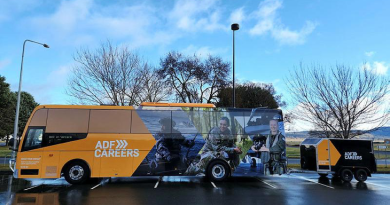K9 team tackle danger zones

Amid shifting tactics, explosive detection dog (EDD) Ash is helping engineers secure objectives and detect threats before troops breach danger zones.
CAPTION: Australian Army Private Shonee Gelhaar and her explosive detection dog Ash from the 3rd Combat Engineer Regiment – their skills put to the test in Townsville, Queensland, during the nation-wide Exercise Talisman Sabre 25. Photo and story by Corporal Luke Bellman.
It’s a vital role that places her nose – and her handler, Private Shonee Gelhaar – at the front of the fight during high-risk search operations.
As part of Exercise Talisman Sabre 2025, the pair are supporting Battle Group Kapyong by working alongside combat engineers in complex, threat-laden environments.
At just three years old, Ash searches for explosives, weapons and booby traps hidden along routes and inside buildings.
She detects the scent of explosive material, then signals by lying down or freezing.
If she responds, her handler recalls her and an engineer steps in to investigate and confirm the threat.
“She’s trained to stay calm and ignore distractions. When she finds something, she just drops into a down and that’s my cue to act,” Private Gelhaar said.
“From there, it’s a team effort with the engineers to check and clear the threat safely.”
Ash can work on or off the lead, clearing areas up to 50 metres ahead using patterns such as figure-eight or diagonal runs.
She’s most effective during dismounted patrols, but also supports post-battlefield clearance to ensure areas are safe for troops to enter.
Ash is trained to respond only to explosive scents, ignoring distractions such as food, noise or movement around her.
She takes verbal commands such as “get on” or “seek on” to search areas either broadly or with pinpoint focus.
Private Gelhaar said she and Ash had been a team for about a year and continued to develop their bond through daily work.
“We spend every day together. In the field she’s always by my hip, so we’ve built a really strong connection,” Private Gelhaar said.
During field exercises, the pair operate as a 24-hour team, sleeping, eating and patrolling together to build trust and coordination.
Their role has expanded recently as explosive detection capabilities are trialled within mechanised infantry operations for the first time.
“It’s new for us to work in the mechanised space, but so far it’s proving effective – especially during the post-clearance phase,” Private Gelhaar said.
Private Gelhaar said dogs such as Ash provided a critical layer of safety by going ahead of troops into potentially deadly situations.
“They’re the ones out front, taking the risk so the rest of the team can move through safely,” she said.
“I hope that Ash and I keep improving together with every task.”
.
.

.
.





